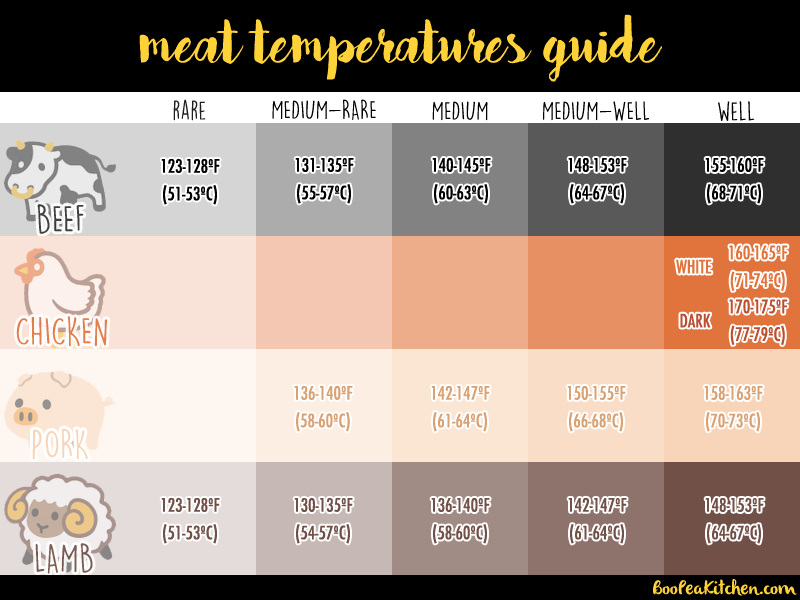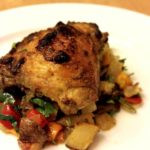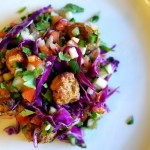If you’ve watched some TV cooking shows, you’re bound to have heard how cooking a steak to a pitch-perfect pink medium-rare, or keeping a roast chicken or turkey juicy, takes professional skill. Or at the very least, a laundry list of preparation steps like brining in a tub of 20 ingredients or salting no more or less than five-and-a-half seconds before the meat hits the pan.
Yes, some of these tricks have their merits, but I would say 95% of the moistness and natural flavor of your favorite steak of roast comes down to temperature. So once you go out and buy a sturdy, reliable meat thermometer, here’s a table of temperatures to look for if you want that juicy goodness:

These are RESTED temperatures!
One important note is that these are rested temperatures taken after the meat is removed from your oven or stove and allowed to sit for about 5-15 minutes, depending on the size of the steak or roast! Because the temperature of the outer parts of the meat is much higher than on the inside as you just finish cooking, the heat redistributes and transfers towards the inside as the meat rests. You should aim to rest the meat after the thickest part of the meat reaches about 5-10 F under the target temperature. The larger the meat and the higher the cooking temperature, the earlier you should rest it, towards the side of 10 F under.
Using a New York Strip steak as an example…
Remove it from the pan or oven onto a resting plate when it hits about 126-130 F for medium-rare, since it will cook through to the middle and rise a few degrees as it rests.
On cooking chicken:
Don’t eat raw or undercooked pink, fleshy chicken. As if you needed a reminder. Though some of the USDA’s 165 F guideline is rightly simplified for mass public safety, some of the juiciest, most tender chicken can be served safely around 145-150 F using proper techniques and times. At BooPeaKitchen, we like our white meat (the breast) around 155-160 F and dark meat (the rest) around 165 F, so we take our roast chickens out around 150 F when the juices that run off the chicken just start turning clear. Just so that no one accidentally gets sick thanks to us, our official recommendation will be a little higher!
On cooking pork:
While rare pork is still questionable because of the risk of the Trichinella spiralis parasite, the USDA fairly recently lowered the safe temperature to 145 F. It turns out that a few minutes around 136 F is sufficient stave off this parasite, so we give temperatures down to medium-rare. We would still recommend pork be cooked medium for the best taste and texture!
On ground meats:
These temperature do not apply for ground meats, simply because there is a lot more surface area for possible bacteria to survive. Cook any ground meat to at least 157-160 F!
*The images used the chart are credited to Google emojis.




